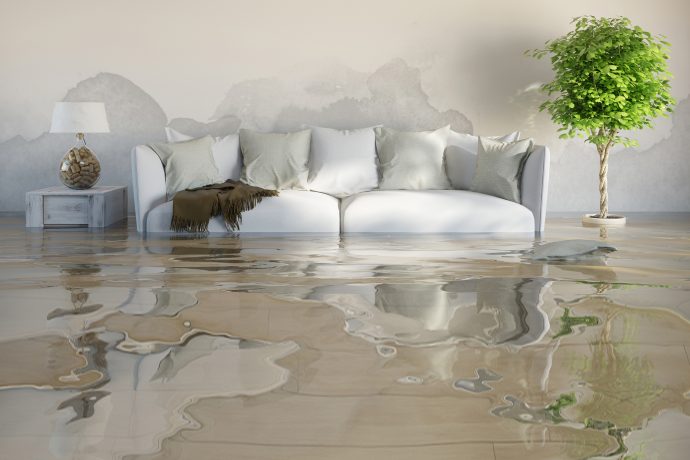The problem with water damage is twofold. First, it permeates every porous surface from fabrics to wood. Second, almost all water damage requires flood insurance to cover renovation costs. If you are a homeowner who lives well above the 100-year floodplain, you may think you do not have to worry too much about water damage. However, here are just four of many examples of threats that can cause catastrophic water damage even if you live high on a hill.

Swimming Pools
Even premium above-ground swimming pools are just thin metal support structures with plastic liners holding back thousands of gallons of water. A punctured liner or too much weight on the pool’s edge can cause an instant release of all that water. If your home is in the path of the water, it can cause instant flooding to basements, first-floor living areas, garages and sheds. In addition to the loss of the pool and possible home flooding, thousands of dollars of landscaping damage may occur.
Poor Grading
The soil around your home is supposed to gently slope away from your foundation to carry away rainwater and runoff. Over years the soil can compact, and nearby lawn and tree areas can actually add to the height of the soil due to root heaving and continual deposits of decomposing plant material that becomes soil.
Flat areas around your foundation, or worse, areas that slope toward your foundation, can wreak havoc on basement walls. Water that is left to keep the soil soaked close to your house creates many tons of hydrostatic pressure on foundation materials that eventually begin to leak.
Gutter Problems
This is a slow, insidious kind of home water damage. Clogged gutters, gutters of the wrong size, gutters that are not properly sloped to drain, and leaky gutters can cause major water damage over time. You are not likely going to be outside walking around your home during a rainstorm in order to spot overflowing gutters.
However, if you look at the ground below the gutters around your home and see a line where the grass does not grow, or notice depressions in mulch or damage to plants immediately below a gutter, it is likely that the gutter overflows when it rains. The excess water not being carried away can find its way into basements and crawl spaces either in liquid water or water vapor form. Both lead to mold and structural damage, so if you notice this problem, Allstate Gutter & Siding or a similar organization in your area can help you remedy the situation.
Hillside Runoff
This is usually not a problem during gentle rains when plants and trees on a hillside are well established with deep roots. Subtle changes to the hillside or the area at the top of the hill can combine with an exceptionally heavy rain to produce runoff that looks like a whitewater river.
Homeowners who have experienced flooding due to hillside runoff usually comment at how shocked they were to see the amount of water that flowed down the hillside to cause the flood. You cannot control Mother Nature or construction projects at the top of a hill on another property. To protect your home, it is important to talk with an insurance agent for full water damage and flood protection.
You do not have to live next to a river or stream to have water damage happen at your home. Most homeowners have considered the possibility of a burst pipe or leaking drain, but there are other water hazards that can cause as much damage as a raging flood. A large diameter water line in the middle of your street can heave pavement and concrete and spew thousands of gallons per minute. Consider the water threats where your home is located to be better prepared.

